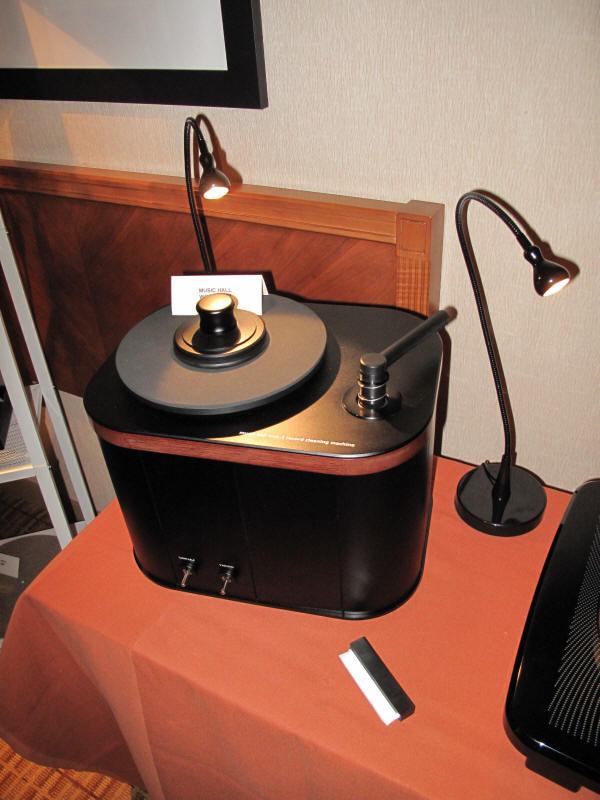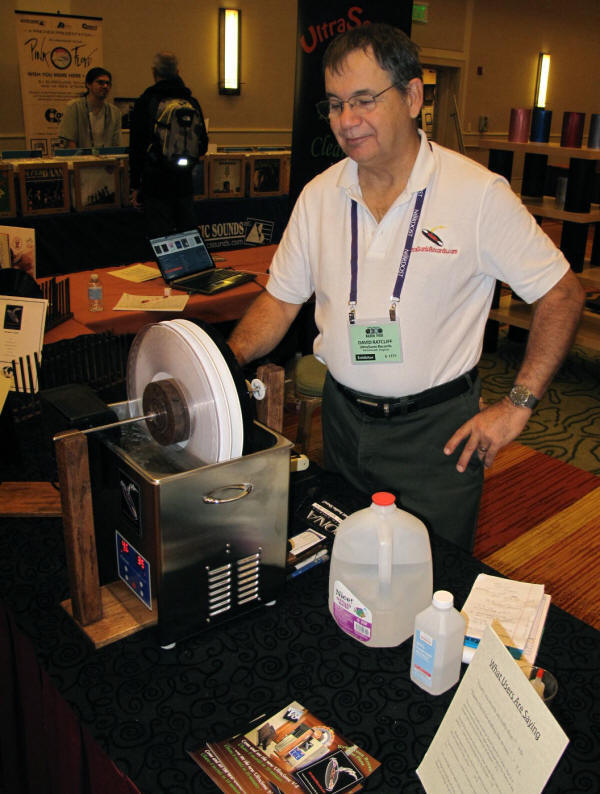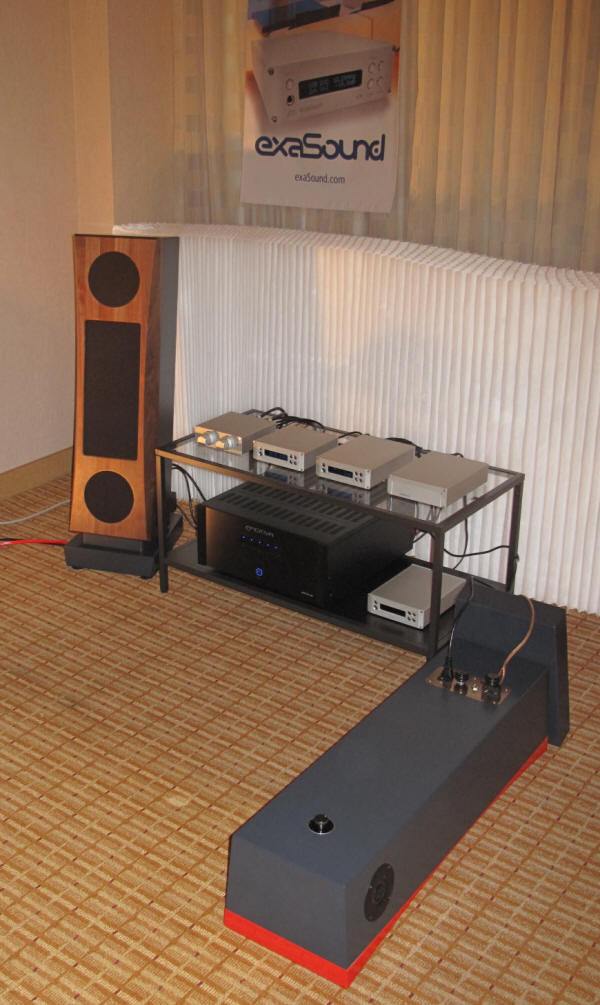|
You are reading the older HTML site
Positive Feedback ISSUE 69
RMAF 2013
Autumn, 2013. The air is crisp, the leaves are turning. Anticipation rises—it's time for the faithful, the enthusiast, and the all those thirsty for the new and exciting to descend upon Denver Colorado for… the Great American Beer Festival. Oops, wrong show review. But Colorado has become known as the "Napa" of the craft-brew culture, and tickets for this year's event sold out in under 2 hours. It's easier to get Bronco tickets, unless of course one has show-savvy friends in the area. This same weekend brought me a few miles south of that rowdy bunch at the Convention Center to the 10th annual Rocky Mountain Audiofest. I've been to about half of them, and it's been interesting to see the Colorado Audio Society volunteer-run operation emerge as the inspiration for the proliferation of (often for-profit) regional audio shows over recent years. Attendance seemed consistent with past years, and you can just walk up and register, 3 days for $25. Much as the home-brew hard-core has been supplanted by the success of specialist independent breweries, RMAF has moved beyond the intimate audio-club, horns/tubes/DIY enthusiast base of yore. Taking up the slack—and filling the rooms—has been the role of the "local" manufacturers (PS Audio, Ayre, Boulder, Rowland, and Wilson, Kimber, and Zu from over the hill in Utah), and the major Denver-area brick&mortar shops—Listen Up, Crescendo, Gold Sound, etc. Balanced against the regional presence were plenty of established mid-size audio manufacturers and importer/distributors—and flock of fledgling start-ups. I was only able to attend part of each of the three days, and wasn't always in the best of shape anyway, so I've made no attempt to be comprehensive. My interests are fairly narrow: I like my audio gear affordable, functional, and fun to listen to. I'm also a Record Guy, but I'm convinced we have entered the Decade of the DAC. We are 31 years and two months into the CD era, and the sound-samplers have surely got it right this time… The buzz is all about DSD (the SACD file format), Double DSD, and ever-higher sampling rates. It seemed like every other room featured a new USB DAC, each smaller and cheaper as one walked down the hall. On the other hand, every other room also had a turntable, each one more massive and expensive. At least one manufacturer has recognized the opportunity. PS Audio introduced the NuWave Phono Converter, which combines a high-quality MM/MC phono stage and high-res PCM/DSD analog-to digital converter in one chassis. Sure, you can play your $40 hi-res download through your fancy new DAC. This thing allows you to convert a $1 yard-sale treasure to DSD or PCM at much higher than CD resolution, and stash it on your hard drive, iPod, or music server. Here, PS Audio honcho Paul McGowan explains to Roy Gregory and Dennis Davis how the analog goes in and the digital comes out.
The thirty-year dialogue between LP and CD has been fundamental to the continued success of RMAF, the audio press, and the High-End industry itself over that span. No precise survey, but the demos I heard this year were about 40% computer/DAC, 40% LP, no more than 20% silver disc. And let me go out on a limb here, for whatever it's worth. I believe more record cleaning machines were introduced at RMAF 2013 than new disc players. To wit: The original Keith Monks record cleaning machine was a idiosyncratic classic of English "design": big, clunky, noisy... and very effective for the purpose built, even if it looked like it was cobbled together from salvaged Hoover and MG-B parts bolted to a gramophone platter. Keith is no longer with us, but son Jonathan showed up with a revised model.
To achieve a lower price point, it is built around… a disco-style direct-drive turntable. Still runs inside out, guided by the spool of thread. But environmental and geopolitical restrictions have forced Monks to abandon their ancient and honourable methanol-based formula in favor of an eco-friendly solution based on plant compounds. Yes, it does smell a bit like a Whole Foods shampoo, but then, why not?
It was the cost and complexity of the original Monks machine that many years ago inspired Harry Weisfeld to invent the un-complicated HW-16, VPI's first major product, and easily the most widely imitated vacuum record cleaning design. OKKI-NOKKI was showing a revised and improved model of their cute-as-a-bug version, and Music Hall had a new one of their own, the WCS-2, with an even higher WAF, at $795. Roy Hall assured me it could dry the disc in one revolution, but no information was available at press time as to the long-rumored single-malt based cleaning solution, which would probably just slow things down anyway.
But VPI knows it takes more than a pretty fascia to win market share. Tucked away in the LP crammed exhibit hall was the new MW-1 Cyclone RCM, an easy upgrade from the HW-16.5, adding reverse mode (a cyclone rotates in the opposite direction as a hurricane), acrylic rather than MDF construction, and a removable rather than hinged lid, for "around $1000". The clever among you will have already decoded that this is Harry's son Mathew's own first VPI product.
Moving up-market, the well-established ultrasonic Audio Desk Systeme Vinyl Cleaner now has serious competition at the $4000 price point: the Klaudio (Myles Astor's review).
One nice touch was an adapter for 7" 45s, but nothing at the moment for 10" discs (or 78s, for that matter). Boasting 200 watts worth of ultrasonic transducers, built like a tank, and both adjustable and automated, it relies on pure distilled water cavitation to release contaminants rather than added surfactants or solvents. Depending on how and from what a given LP is be-grunged, expect that perspective to be controversial.
For that matter, readily available commercial ultrasonic cleaning machines are generally used with a variety of solutions formulated for various applications—medical/dental, optical, jewelry, firearms, auto parts, oxide removal, coins, etc. There is of course plenty of You-Tube and audio-forum activity around cleaning LPs via DIY adaptations of commercial products. So it was a pleasure to discover David Ratcliff at the show with a well thought out and comprehensive package to do up to 8 LPs per run, rotisserie-style, all for $1400. (For the record, he uses the time tested mix of distilled water, isopropyl alcohol, and EK Photo-flo). Back to the show. One of the first of many familiar faces I ran into was Paul Wakeen of Stillpoints. Having mastered the microvibe, he is about to introduce a sophisticated room treatment system. "Listen to something in our setup, and everywhere else, you'll hear the room" he asserted. His panels are 2' x 2' x 3", with a dye-sublimation image transfer option to help blend in domestic décor. (I passed on photographing them as I understood they were prototypes). He was pretty much right, too. There are two ways to get good sound at an audio show. First, get a big room, and damn the expense. Almost all the conference and meeting rooms at the Marriott had impressive sound, with the prize as usual going to the Kimber Iso-Mike surround extravaganza (although some of the same musicians playing live in the lobby sounded even better. Sigh.) Given the limited number of big rooms, the likes of Scaena (below) and Wilson Audio decamped to the more upscale Hyatt, a 5 minute walk away (AKA no walk-in foot traffic). Too bad, as the Hyatt also has a great craft-brew pub, if one couldn't get tix to the GABFest.
The second way is to use the room, not fight it. There was again plenty of evidence that just dumping $100K+ of perfectly fine audio gear in a $149/night hotel room is a losing proposition. Room modes, wall reflections, floor bounce, seating limitations, AC voltage droop, thin air at altitude, system break-in, all sorts of things can mess you up, especially if all you got in reserve is breathy female vocals at 105dB. The walls can be dealt with. Jeff Joseph of Joseph Audio always ranks at the top of the "Best Sound" lists by setting up on a diagonal and demoing with things like classic Elvis and Satchmo; his competitors don't seem to notice. Carl Marchisotto positions his Nola speakers in the middle of a double room with great results. Open baffle and panel designs "play the room" differently than boxes. Likewise omni designs from German Physiks and MBL. A few, like Volti's Greg Roberts, set up to fire across the room, but then his corner-friendly Vittorra folded horns (below) are the size of Maytag washers. All the above scored above average to my ears. It is just amazing how many exhibitors blamed the room, inadequate break-in, or lack of room treatment for underwhelming results.
I can settle on three very different nominees for best sound: one affordable, one unaffordable, one basically unavailable.
First, David (son of Arthur) Janszen was showing his 38" tall zA2.1 hybrid-electrostats with the most excellent 2 and 5 channel exaSound DACS, which meant there were 3 speakers up front, 2 in the back. In plain stereo, they were among the very few systems that could image outside the speakers and convey height and depth in a standard RMAF room. So many people assumed the center channel was responsible, he belly-flopped it on the floor. If you look closely at it, you can see one of his tricks: a side-firing tweeter. I'm sure the legal folks at Bose will be in touch. $7500, made affordable by a nice discount if you are first in your neck of the woods to buy 'em. (Reviews here and here) Second, the High Water Sound room, unfortunately way down at the end of a fifth floor hall, and easy to miss. $50K analog front end (TW-Acustic Raven AC Anniversary SE turntable, two arms, Ortofon and Miyajima carts), $135K of Tron-Electric electronics, Cessaro Horn Acoustics Liszt 8' tall speakers ($165,000), High Fidelity Ultimate and Telwire cables. Just magnificent, even on simple voice and acoustic guitar.
Third, Win Tinnon's 200lb Saskia turntable, Schroder arm, a couple watts of SET power, and a pair of vintage RCA Model C Studio Monitors, from 1954. All wired with Tel Wire.
I mean, seriously, you can imagine someone dragging a second one into the room when they first cued up Reiner's stereo Zarathustra that year. And still competitive with anything at the show. Shivers. Ok, and the Best of the West, Accessories Category: the mooo mat, from Music Hall. $75 of cork & cowhide platter mat!
|



